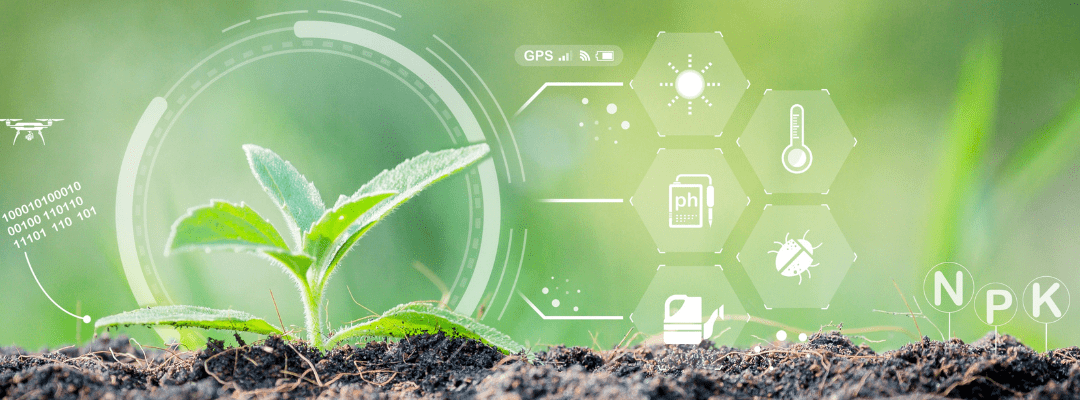As climate change escalates, weather patterns become increasingly erratic and extreme, posing a major challenge to farmers’ ability to consistently achieve optimal yields. As the world’s population booms, it is projected that there will need to be a 70% increase in food production by 2050. These growing demands put immense pressure on the agriculture industry, necessitating a crucial shift towards sustainable farming practices.
Despite this immense pressure from climate change and agricultural demands, advancements in innovative agriscience technology offer valuable tools to combat these challenges. This technology goes beyond traditional crop monitoring by diving deeper into factors like environmental impact.
Remote sensing is a prime example of an innovative tool that’s combatting climate change. By precisely predicting nitrogen demand, it offers farmers field-specific fertilizer and nutrient plans, resulting in more efficient resource usage and less environmental burden.
Why Precise Nitrogen Use Matters
The amount of nitrogen crops need can differ significantly across fields and landscapes. Yet, historically, growers have relied on a single, uniform application of nitrogen across entire fields, sometimes even the entire farm. This “one-size-fits-all” approach to nitrogen application is far from ideal or effective.
This blanket application of nitrogen is problematic for several reasons. First, it’s an inefficient use of a major cost for growers. Nitrogen is an enormous cost for growers, but using the right amount isn’t just about saving money; it also impacts plant health, yield, and the environment. This more precise application enables accurate nitrogen demand forecasting, modifying plant health, and promptly making necessary adjustments important on every level.
With one of the key tenets of sustainable agriculture focusing on the land itself, there’s a push to limit impact on soil health and the environment. How do current farming practices impact soil productivity, and how do the fertilizers used affect nearby water sources? When it comes to nitrogen, we know that excessive use of nitrogen leads to negative effects on the environment, like leaching and denitrification, and, because over-application doesn’t actually benefit plant growth, it hurts the grower’s bottom line.
In fact, it goes a step further. Excessive application not only doesn’t help plants grow, but can actually cause “luxuriant growth,” which leaves the plant more susceptible to disease. And even if that doesn’t occur, an overabundance of nitrogen being applied can result in a reduction of plant strength, which can lead to plant lodging in moderate wind conditions.
The Benefits of Instilling Sustainable Agriculture Practices
Determining the optimum amount of nitrogen to use benefits everyone. The plant grows properly, the grower doesn’t waste money on fertilizer they don’t need, and the surrounding land isn’t negatively impacted by nitrogen run-off, leaving it in better shape for future growing seasons.
Sustainable agriculture places a strong focus on soil health and environmental impact. Excessive nitrogen use can harm nearby water sources through leaching and denitrification. It also hurts the grower’s bottom line as it doesn’t benefit plant growth and can even lead to “luxuriant growth,” making the plant more susceptible to disease. Additionally, over-fertilization can weaken the plant, making it more prone to lodging in moderate winds.
Accurately forecasting nitrogen demand, monitoring plant health, and making adjustments as needed are crucial for sustainable agriculture. This ensures the plant receives optimal nitrogen levels for optimal growth, without unnecessary costs or environmental damage.
What Remote Sensing for Nitrogen Use Looks Like in the Field
Just as agronomic advisors are able to collect data from aerial imagery using drones and satellites to gain insights on things like field condition, crop health, and stand count, these same tools can also be used to collect data on a crop’s fertilizer needs.
Nitrogen stress, in general, can be detected pretty easily in aerial images, since the shortage of chlorophyll and other light-absorbing pigments it causes leads to an increase in canopy reflectance. This is the case for all visible wavelengths and may also be true in near-infrared wavelengths.
In the last couple of decades, this technology has leveled up. Multispectral, hyperspectral, and thermal aerial imagery all help to detect a crop’s nitrogen needs. Drones and satellite imagery are used to detect and monitor these readings – being further leveraged with complementary sensors. Then, precision ag software analyzes the data in near-real time. Allowing growers and agronomic advisors to quickly and accurately diagnose nutrient deficiencies and determine the precise amount of nitrogen needed.
From saving money to improving crop performance to doing the right thing for the planet at large, using remote sensing to more precisely apply fertilizer is a step toward sustainable, efficient agriculture that truly benefits everyone.


